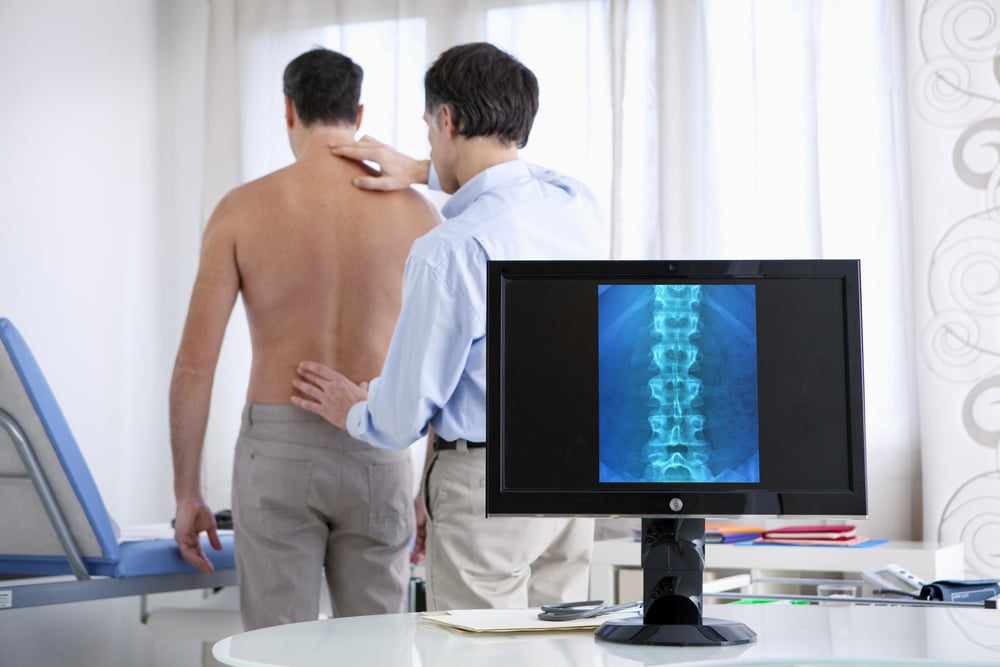Posterior lumbar fusion is a proven treatment that helps relieve persistent lower back pain caused by spinal instability, disc degeneration, or nerve compression. By stabilizing the affected vertebrae and reducing mechanical irritation, this procedure restores comfort and mobility. At Northwest Spine Surgery, we offer advanced surgical techniques and expert guidance to help patients regain control of their lives with confidence.
Northwest Spine Surgery is home to board-certified, fellowship-trained surgeons like Dr. Kendrick Khoo and Dr. Serena Liu, who bring advanced expertise in minimally invasive and complex spinal procedures. Their academic training at institutions such as UC Davis and the University of Maryland ensures that patients receive precise, evidence-based care. Our multidisciplinary team approach, combined with clear communication and advanced surgical planning, helps ensure safer outcomes and a smoother recovery.
What Is Posterior Lumbar Fusion?
Posterior lumbar fusion, also known as arthrodesis, is a surgical procedure performed to join two or more of the lumbar vertebrae (the small bones of the lower back) into one solid bone. This operation is designed to stop mechanical pain, which is the pain associated with the movement of the affected bones and results in inflammation of the discs and joints. During this surgery, a bone graft is inserted along the side of the vertebrae, helping the bones grow together over time.

Reasons for Posterior Lumbar Fusion
Posterior lumbar fusion is commonly performed to treat a variety of spinal conditions affecting the lower back, including:
- Spondylolisthesis
- Spinal fractures
- Tumors
- Infections
- Scoliosis
- Degenerative disc disease
- Radicular pain (down the buttock and thigh)
Other surgical procedures are frequently performed along with lumbar fusion, such as removing bone spurs or repairing herniated discs.
The Posterior Lumbar Fusion Procedure
Patient Positioning and Anesthesia
During the procedure, performed under general anesthesia, the patient is typically positioned face down on a special operating table. This position improves the surgeon’s access to the spine, enhances comfort, and minimizes blood loss.
Surgical Access and Disc Preparation
An incision is made in the lower back to expose the spine. The surgeon removes part of the lamina — the bony covering of the spinal canal — and clears out any disc fragments or bone spurs that may be pressing on the nerves. A thin layer of bone is shaved from the vertebrae to prepare for fusion.
Bone Graft and Instrumentation
To promote fusion and eliminate mechanical pain, a bone graft is placed where the vertebrae were prepared. Grafts may come from the patient’s own hip (autograft), a donor (allograft), or be synthetic. These are secured using screws, rods, and plates to keep the spine stable while the bone grows together. This stability increases the likelihood of a successful, permanent fusion.

Recovery from Posterior Lumber Fusion
Recovery from this surgery typically spans 1 to 3 months and involves a structured physical rehabilitation program. Patients are encouraged to begin walking shortly after surgery to support healing and prevent complications. During recovery, it is essential to avoid heavy lifting, bending, and twisting. As healing progresses, a tailored physical therapy plan will help rebuild strength, improve flexibility, and gradually restore function for a safe return to daily activities.
Why Choose Northwest Spine Surgery for Posterior Lumbar Fusion
If you're experiencing chronic lower back pain and want to explore whether posterior lumbar fusion is right for you, our Portland-based specialists are here to help. Our team at Northwest Spine Surgery is led by experienced, fellowship-trained surgeons who specialize in spinal procedures, including posterior lumbar fusion. We use the latest surgical techniques and a patient-centered approach to deliver outstanding care. From your first consultation through recovery, we prioritize education, comfort, and achieving the best outcomes.
Frequently Asked Questions About Posterior Lumbar Fusion
Most posterior lumbar fusion surgeries take between 2 and 4 hours, depending on the case's complexity.
Yes, most patients are encouraged to begin walking within a day after surgery to promote healing and circulation.
Recovery typically takes 1 to 3 months, with physical therapy playing an important role in regaining strength and mobility.
The fusion will limit movement at the fused segment, but most patients experience improved overall mobility due to reduced pain.
Yes, once the bone successfully fuses, the results are intended to be permanent.
Contact Us About Posterior Lumbar Fusion
If you're experiencing chronic lower back pain and want to explore whether posterior lumbar fusion is right for you, our specialists are here to help. Call us at 503-253-4000 to schedule an appointment today.
